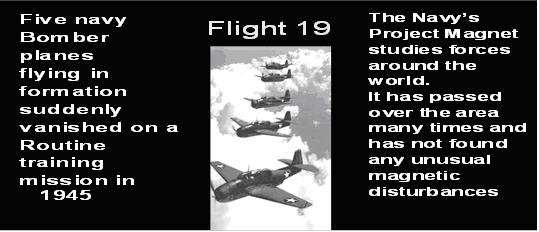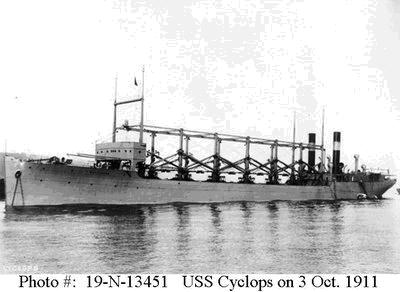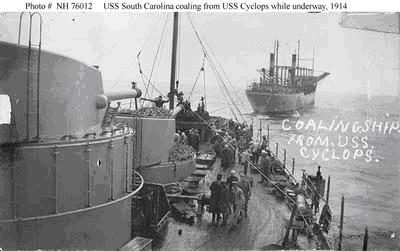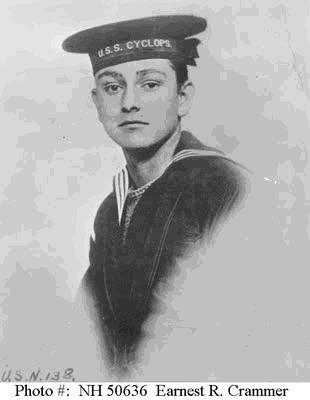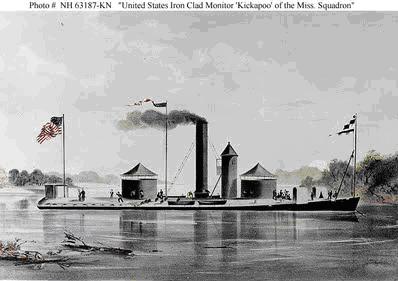Technical Paper Title: The Secrets of Bermuda Triangle
Authors: B.ASHOK & P.FAYAZ KHAN, 1st BTech, EEE
College: Prakasam Engineering College, Kandukur
ABSTRACT
The Bermuda Triangle (a.k.a. the Devil’s Triangle) is a triangular area in the Atlantic Ocean bounded roughly at its points by Miami, Bermuda, and Puerto Rico. Legend has it that many people, ships and planes have mysteriously vanished in this area. How many have mysteriously disappeared depends on who is doing the locating and the counting.
The size of the triangle varies from 500,000 square miles to three times that size, depending on the imagination of the author writing the latest tale of the Triangle – as some have actually included the Azores, the Gulf of Mexico, and the West Indies as in the “triangle.” Some authors trace the mystery of the Triangle back to the time of Columbus. The number of “incidents” reported to have occurred within the Triangle range from about 200 up to 1,000 incidents or losses in the past 500 years. It has been reported that by 1973 the U.S. Coast Guard answered more than 8,000 distress calls in the area and that more than 50 ships and 20 planes have gone down in the Bermuda Triangle within the last century alone.
Many theories have been given to explain the extraordinary mystery of these missing ships and planes. Evil extraterrestrials, residue crystals from Atlantis, evil humans with anti-gravity devices or other weird technologies, and vile vortices from the fourth dimension are favorite theories among fantasy writers. Strange magnetic fields and oceanic flatulence (methane gas from the bottom of the ocean) are favorite theories among the technically-minded writers. Weather (thunderstorms, hurricanes, tsunamis, earthquakes, high waves, currents, etc.) bad luck, pirates, explosive cargoes, incompetent navigators, and other natural and human causes are favorite theories among skeptical investirtgaos
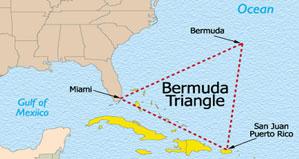
THE REAL MYSTERY OF BERMUDA TRIANGLE
There are some skeptics who argue that the facts do not support the legend, that there is no mystery to be solved, and nothing that needs explaining. The number of wrecks in this area is not extraordinary, given its size, location and the amount of traffic it receives. Many of the ships and planes that have been identified as having disappeared mysteriously in the Bermuda Triangle were not in the Bermuda Triangle at all. Investigations to date have not produced scientific evidence of any unusual phenomena involved in the disappearances. Thus, any explanation, including so-called scientific ones in terms of methane gas being released from the ocean floor, magnetic disturbances, etc., are not needed. The real mystery may be how the Bermuda Triangle became a mystery at all.
HISTORY
the modern legend of the Bermuda Triangle began soon after five Navy planes, known at Flight 19, vanished on a training mission during a severe storm in 1945. The most logical theory as to why they vanished is that lead pilot Lt. Charles Taylor’s compass failed. The trainees’ planes were not equipped with working navigational instruments. The group was disoriented and simply, though tragically, ran out of fuel. No mysterious forces were likely to have been involved other than the mysterious force of gravity on planes with no fuel. It is true that one of the rescue planes blew up shortly after take-off, but this could be due to a faulty gas tank rather than to any mysterious forces.
Over the years there have been dozens of articles, books, and television programs promoting the mystery of the Bermuda Triangle.
In short, the mystery of the Bermuda Triangle became a mystery by a kind of communal reinforcement among uncritical authors and a willing mass media who uncritically passed on the speculation that something mysterious was going on in the Atlantic.
Mysterious Incidents in the Bermuda Triangle
Aircraft Incidents in the Bermuda Triangle
• 1945: December 5, Flight 19 (5 TBF Avengers) was lost with 14 airmen, and later the same day, PBM Mariner BuNo 59225 was lost with 13 airmen while searching for Flight 19.
• 1948 : January 30, Avro Tudor G-AHNP Star Tiger was lost with 6 crew and 25 passengers, en route from Santa Maria Airport in the Azores to Kindly Field, Bermuda.
• 1948: December 28, Douglas DC-3 NC16002 was lost with 3 crew and 29 passengers, en route from San Juan, Puerto Rico, to Miami.
• 1949 : January 17, Avro Tudor G-AGRE Star Ariel was lost with 7 crew and 13 passengers, en route from Kindly Field, Bermuda, to Kingston Airport, Jamaica.
Maritime Incidents in the Bermuda Triangle
• 1843: USS Grampus, schooner, last seen March 15, presumed sunk in a gale off Charleston, South Carolina.
• 1918: USS Cyclops, collier, left Barbados on March 4, lost with 309 crew and passengers en route to Baltimore, Maryland.
• 1921: January 31, Carroll A. Deering, five-masted schooner, Captain W.B. Worm ell, 11 crew, found aground and abandoned at Diamond oals, near Cape Hatteras, North Carolina.
• 1925: December, SS Cotopaxi, tramp steamer, Captain Meyers, went missing with crew of 32 after leaving Charleston, South Carolina for Havana, Cuba, reported caught in tropical storm.
• 1967: December 22, Witchcraft, cabin cruiser, 2 onboard, disappears one mile (1.6 km) off Miami; had called Coast Guard requesting a tow, but on their arrival 19 minutes later no trace found; possibly pushed north by Gulf Stream; search involved 1,200 square miles (3,100 km2).
Incidents on Land Within the Bermuda Triangle
• 1969: Great Isaac Lighthouse (Bimini, Bahamas) – its two keepers disappeared and were never found.
Numerous incidents erroneously associated with the Bermuda Triangle actually occurred elsewhere.
These include:
• 1872: December 5, Mary Celeste, a 282-ton brigantine, sailed from Staten Island, New York City, bound for Genoa, Italy, on 7 November, and was found abandoned some 400 miles (640 km) east of the Azores; her last log entry on Nova
Human Error
One of the most cited explanations in official inquiries as to the loss of any aircraft or vessel is human error. Whether deliberate or accidental, humans have been known to make mistakes resulting in catastrophe, and losses within the Bermuda Triangle are no exception. For example, the Coast Guard cited a lack of proper training for the cleaning of volatile benzene residue as a reason for the loss of the tanker SS V. A. Fogg in 1972. Human stubbornness may have caused businessman Harvey Conover to lose his sailing yacht, the Revonoc, as he sailed into the teeth of a storm south of Florida on January 1, 1958. Many losses remain inconclusive due to the lack of wreckage which could be studied, a fact cited on many official reports.
During sea battles throughout the war Japan lost five aircraft carriers, 340 planes, ten battleships, ten heavy cruisers, nine destroyers, and 4,000 kamikaze planes in the triangle. While most of these disappearances can be explained by mines, submarines, battleships and airstrikes they is in an exception that should be made. One time in 1942 Japan sent a fleet of five warships, three destroyers and two aircraft carriers that were never heard of again, what happened to these ships was never determined. It is extremely doubtful that they were sunken by enemy action because they were in home waters and there were no British or American ships in these waters during the beginning of the war.
“..Over the last century a thousand ships have been reported lost without a trace in the Bermuda Triangle. Using state-of-the-art technology, we’re going to unlock one of the Ocean’s deepest secrets. Can science prove if a recently discovered natural phenomenon could be dragging ships down to a watery grave?
..And we’ll reveal a new mystery that until now was unexplained. Here, the truth can be far stranger than fiction. There are powerful, some would say evil, forces at work out here. Since 1492 when Christopher Columbus first sailed into the area and saw strange lights in the sky, the list of bizarre disappearences in the Bermuda Triangle has grown. Thousands of ships and planes have simply vanished without a trace…”
An area called the “Devil’s Sea” by Japanese and Filipino seamen, located off the east coast of Japan, also exhibits the same magnetic characteristics. It is also known for its mysterious disappearances.
Another environmental factor is the character of the Gulf Stream. It is extremely swift and turbulent and can quickly erase any evidence of a disaster. The unpredictable Caribbean-Atlantic weather pattern also plays its role. Sudden local thunder storms and water spouts often spell disaster for pilots and mariners. Finally, the topography of the ocean/sea- floor varies from extensive shoals around the islands to some of the deepest marine trenches in the world. With the interaction of the strong currents over the many reefs the topography is in a state of constant flux and development of new navigational hazards is swift.
Not to be under estimated is the human error factor. A large number of pleasure boats travel the waters between Florida’s Gold Coast and the Bahamas. All too often, crossings are attempted with too small a boat, insufficient knowledge of the area’s hazards, and a lack of good seamanship.
We know of no maps that delineate the boundaries of the Bermuda Triangle. However, there are general area maps available through the Distribution Control Department, U.S. Naval
History of USS Cyclops and Images
The ironclad steamer Kickapoo** carried the name Cyclops from 15 June to 10 August 1869, then was renamed Kewaydin.
The second Cyclops, a collier*, was launched 7 May 1910 by William Cramp and Sons, Philadelphia, Pa., and placed in service 7 November 1910, G. W. Worley, Master, Navy Auxiliary Service, in charge. Operating with the Naval Auxiliary Service, Atlantic Fleet, and the collier voyaged in the Baltic during May to July 1911 to supply 2d Division ships. Returning to Norfolk, she operated on the east coast from Newport to the Caribbean servicing the fleet. During the troubled conditions in Mexico in 1914 and 1915, she coaled ships on patrol there and received the thanks of the State Department for cooperation in bringing refugees from Tampico to New Orleans.
With American entry into World War I, Cyclops was commissioned 1 May l917, Lieutenant Commander G. W. Worley in command. She joined a convoy for St. Nazaire, France, in June 1917, returning to the east coast in July. Except for a voyage to Halifax, Nova Scotia, she served along the east coast until 9 January 1918 when she was assigned to Naval Overseas Transportation Service. She then sailed to Brazilian waters to fuel British ships in the south Atlantic, receiving the thanks of the State Department and Commander-in-Chief, Pacific. She put to sea from Rio de Janiero 16 February 1918 and after touching at Barbados on 3 and 4 March, was never heard from again. Her loss with all 306 crew and passengers, without a trace, is one of the sea’s unsolved mysteries.
*Collier: full load displacement 19,360; length 542′; beam 65′; draft 27’8″; speed 15 knots.; complement 236
USS Cyclops (1910-1918)
Photographed by the New York Navy Yard, probably while anchored in the Hudson River, NY, on 3 October 1911.
Photograph from the Bureau of Ships Collection in the U.S. National Archives.
U.S. Naval Historical Center Photograph.
USS South Carolina (BB-26) and USS Cyclops (1910-1918)
Engaged in an experimental coaling while under way at sea in 1914. Rigging between the two ships was used to transfer two 800-pound bags of coal at a time. The bags were landed on a platform in front of the battleship’s forward 12-inch gun turret, and then carried to the bunkers.
The donor, who served as a seaman in South Carolina at the time, comments: “it showed that this was possible but a very slow method of refueling. Nothing was heard of the test afterwards.”
Donation of Earle F. Brookins, Jamestown, NY, 1972.
U.S. Naval Historical CentSher Photograph.
Roy Stuart Merriam,
Coxswain, U.S. Navy
Who was lost with USS Cyclops in March 1918.
His cap band is from USS San Diego (ACR-6).
U.S. Naval Historical Center Photograph.
Earnest Randolph Crammer,
Seaman, U.S. Navy
Who was lost with USS Cyclops in March 1918.
His cap band is from that ship.
U.S. Naval Historical Center Photograph.
USS Kickapoo (1864-187Color lithograph by J.H. Bufford after an original drawing by William Jefferson, circa 1864. It is entitled “The United Stated Iron Clad Monitor ‘Kickapoo’ of the Miss.
Conclusion
- The Bermuda triangle has been under learning since 1950.
- It is impossible to describe all the hypotheses explaining mysterious events in this research work, which take place in Bermuda.
- But we can continue the scientific work on this subject, because we have a lot of materials to study and interesting describes are waiting for us.
- It’s the mystery which excites brains of many people and sometime it will be revealed.


